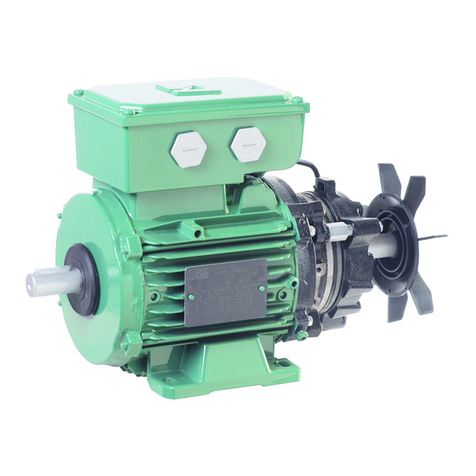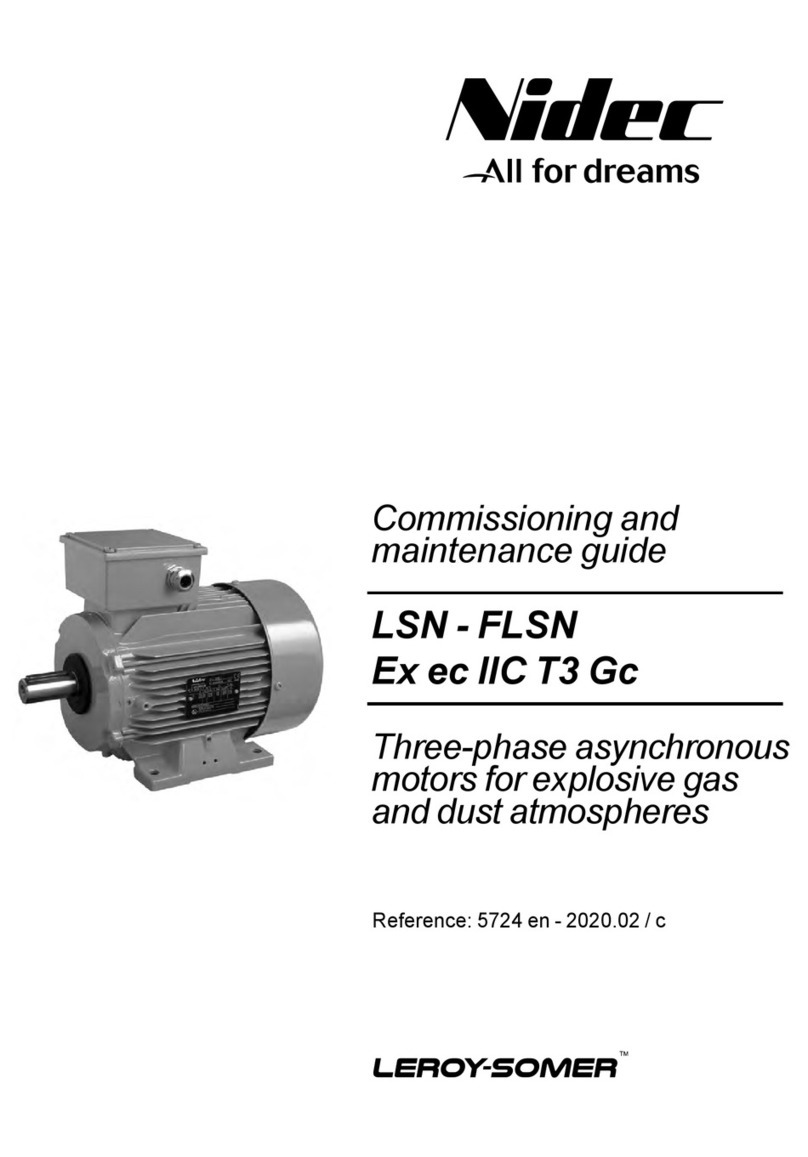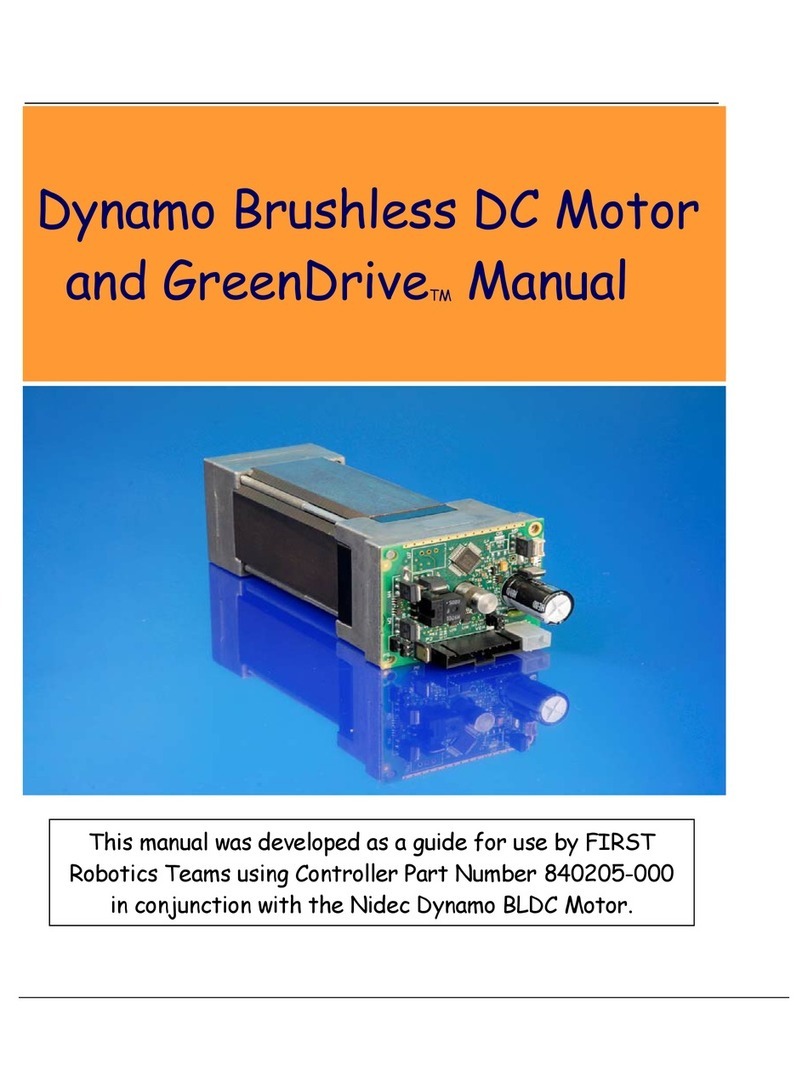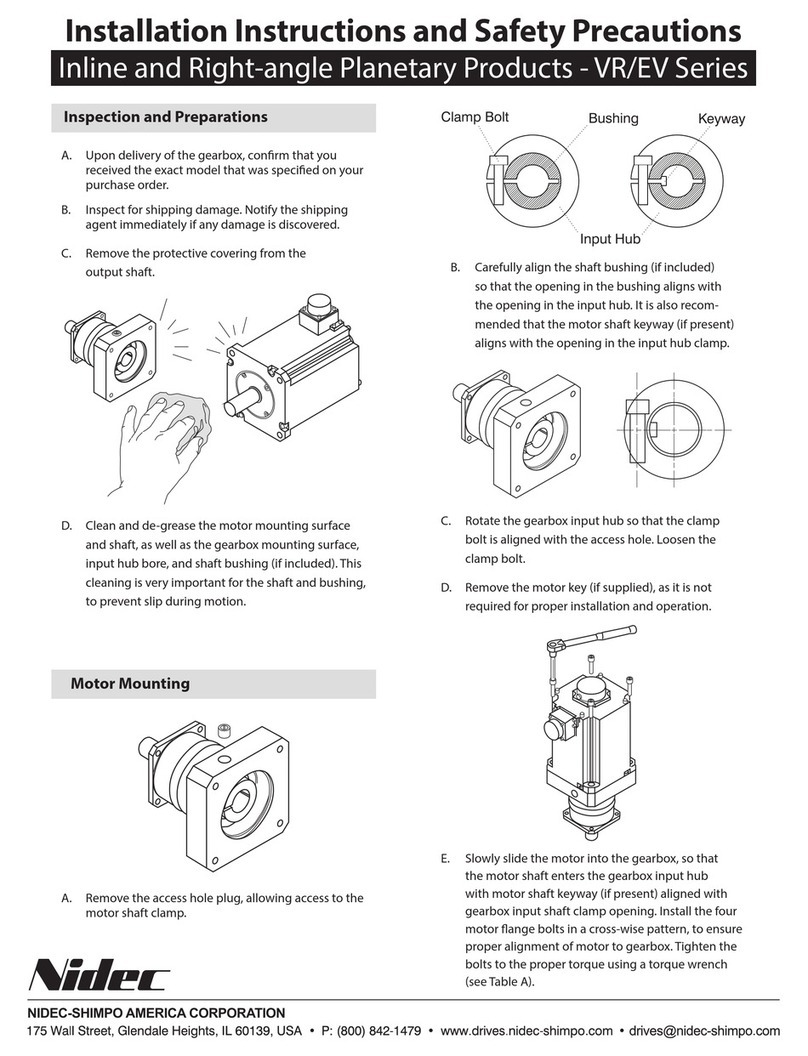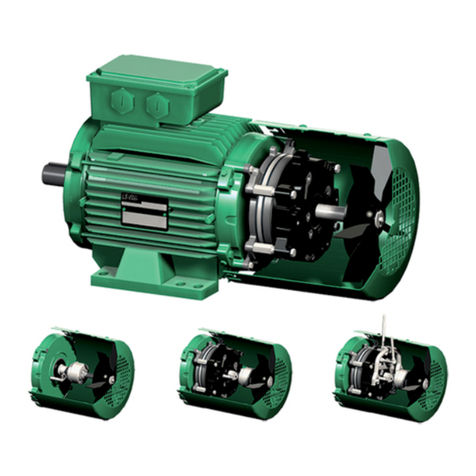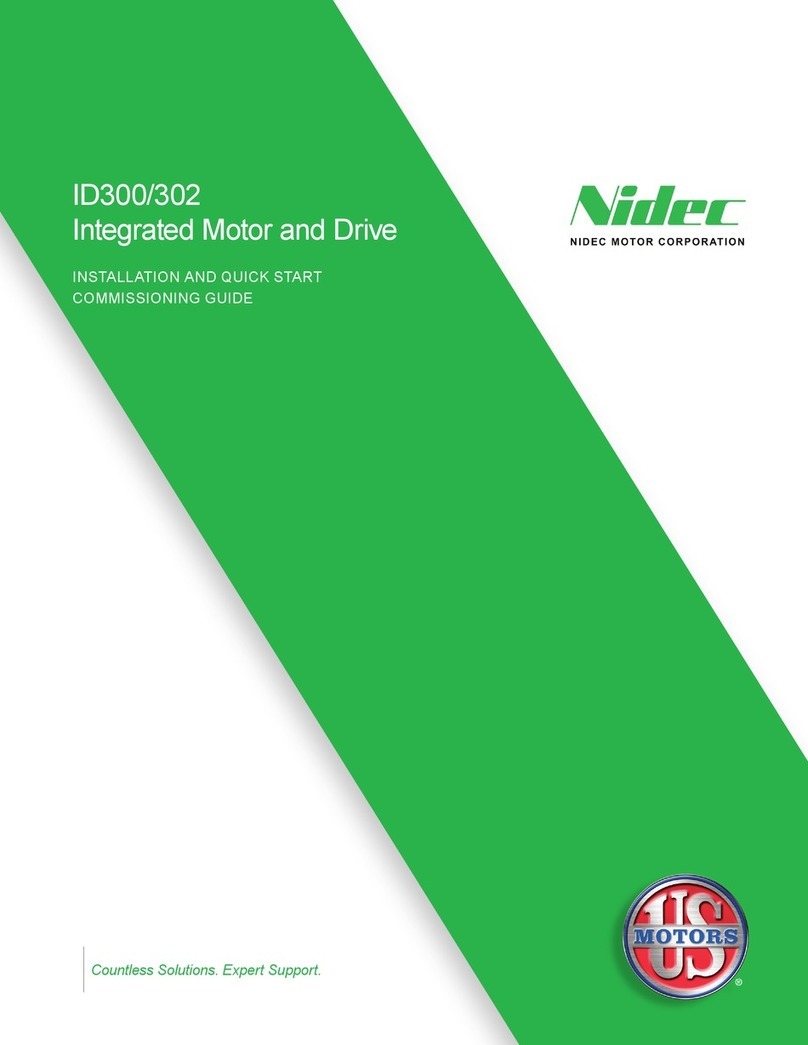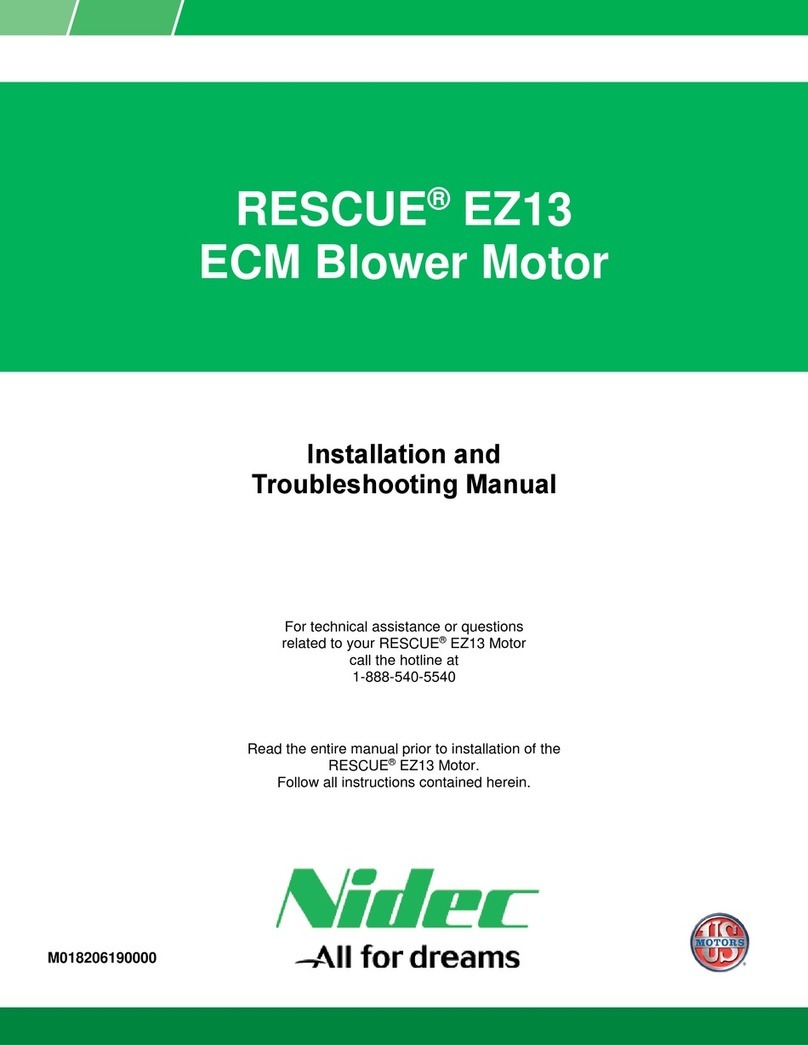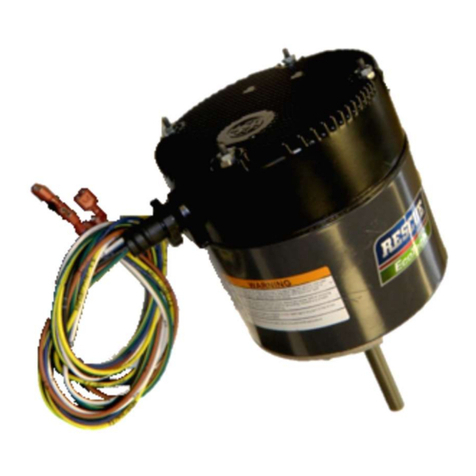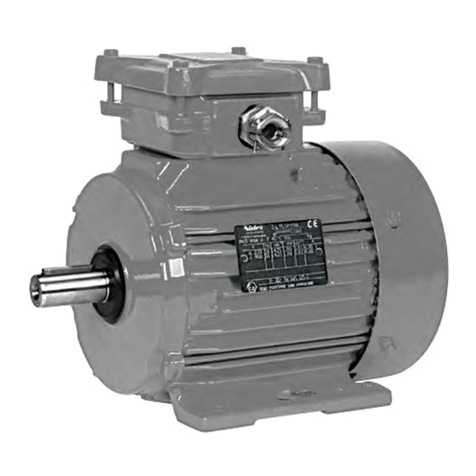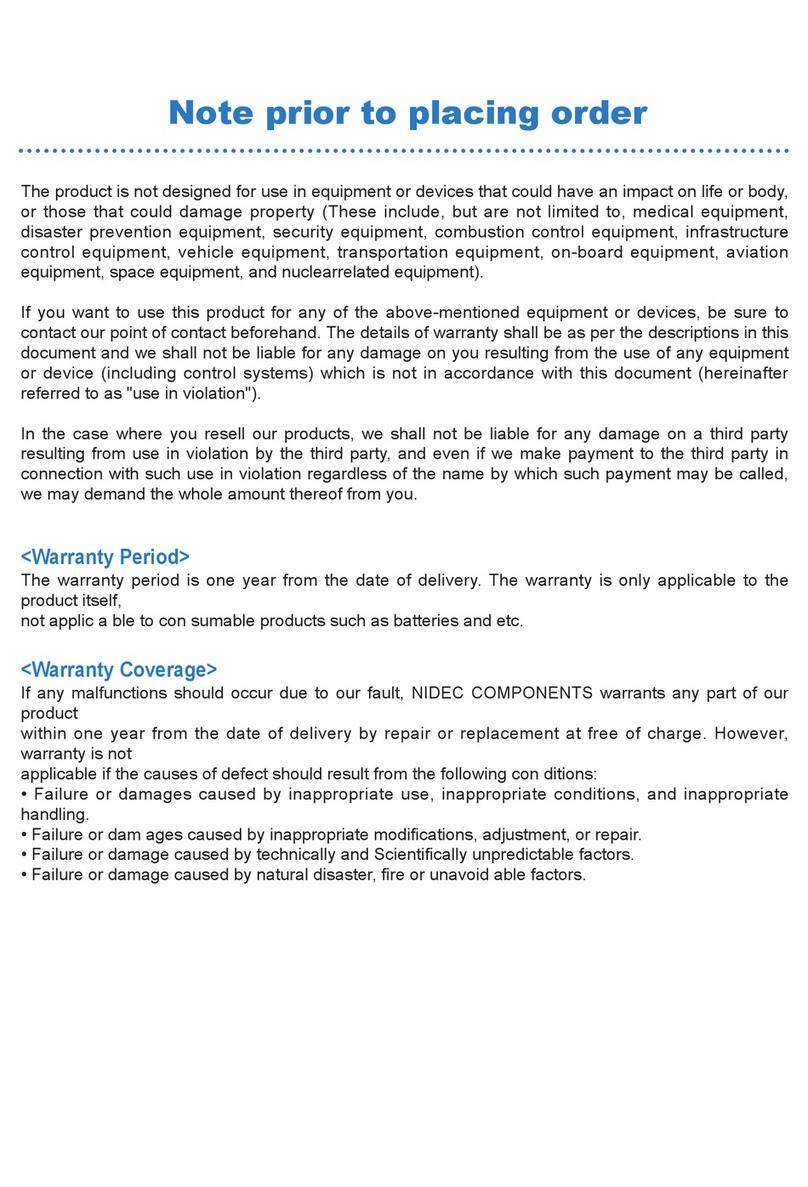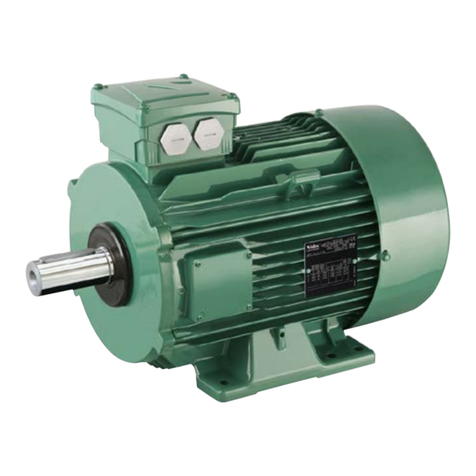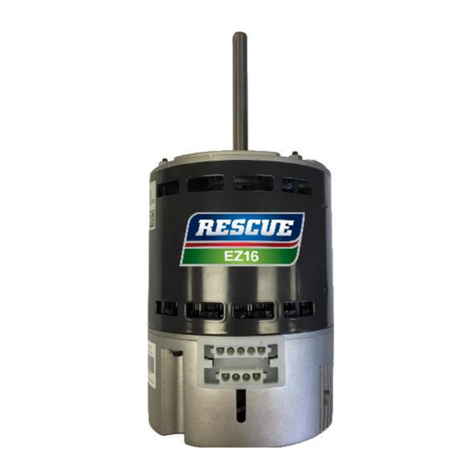
6Leroy-Somer - Liquid-Cooled Motors - LC Series - 5370 en - 2017.05 / b
IMnity
®
- LC Liquid-Cooled 3-Phase Induction Motors
General
There have been a number of changes
to the standards and new standards
created in recent years. They mainly
concern motor efciency and their
scope includes measurement methods
and motor classication.
Regulations are gradually being
implemented, both nationally and
internationally, in many countries in order
to promote the use of high-efciency
motors (Europe, USA, Canada, Brazil,
Australia, New Zealand, Korea, China,
Israel, etc.).
The new generation of Premium
efciency three-phase induction motors
responds to changes in the standards
as well as the latest demands of system
integrators and users.
STANDARD IEC 60034-30-1
(January 2014) denes the principle
to be adopted and brings global
harmonization to energy efciency
classes for electric motors throughout
the world.
Motors concerned
Induction or permanent magnet, single-
phase and three-phase single-speed
cage motors, on a sinusoidal A.C.
supply.
Scope:
-Unfrom 50 to 1000 V
- P
nfrom 0.12 to 1000 kW
- 4, 6 and 8 poles
- Continuous duty at rated power
without exceeding the specied
insulation class. Generally known as
S1 duty.
- 50 and 60 Hz frequency
- On the A.C. supply
-Rated for an ambient temperature
between -20°C and +60°C
- Rated for altitude up to 4000 m
- Water inlet temperature from 0°C to
+32°C
Motors not concerned
- Motors with frequency inverter when
the motor cannot be tested without it.
- Brake motors when they form an
integral part of the motor construction
and can neither be removed nor
supplied separately in order to be
tested.
- Motors which are fully integrated
in a machine and cannot be tested
separately (such as rotor/stator).
STANDARD FOR MEASURING
THE EFFICIENCY OF
ELECTRIC MOTORS: IEC
60034-2-1 (September 2007)
Standard IEC 60034-2-1 concerns
asynchronous induction motors:
- Single-phase and three-phase with
power ratings of 1 kW or less. The
preferred method is the D.O.L.
method
- Three-phase motors with power
ratings above 1 kW. The preferred
method is the summation of losses
method with the total of additional
losses measured.
Comments:
- The standard for efciency
measurement is very similar to the
IEEE 112-B method used in North
America.
-Since the measurement method is
different, this means that for the same
motor, the rated value will be different
(usually lower) with IEC 60034-2-1 than
with IEC 60034-2.
DIRECTIVE 2009/125/EC
(21 October 2009)
from the European Parliament
established a framework for setting the
eco-design requirements to be applied
to “energy-using products”. These
products are grouped in lots. Motors
come under lot 11 of the eco-design
program, as do pumps, fans and
circulating pumps.
DECREE IMPLEMENTING
EUROPEAN DIRECTIVE ErP
(Energy Related Product)
EC/640/2009 - LOT 11
(July 2009) + EU/4/2014
(January 2014)
This is based on standard IEC
60034-30-1 and will dene the efciency
classes whose use will be mandatory
in the future. It species the efciency
levels to be attained for machines sold
in the European market and outlines the
timetable for their implementation.
Efciency classes Efciency level
IE1 Standard
IE2 High
IE3 Premium
IE4 Super Premium
This standard only denes efciency
classes and their conditions. It is
then up to each country to dene the
efciency classes and the exact scope
of application.
EUROPEAN DIRECTIVE ErP
Motors concerned: 2-, 4- and 6-pole
induction motors between 0.75 and
375 kW.
Obligation to place high-efciency
or Premium efciency motors on the
market:
- IE2 class from 16 June 2011
- Class IE3* from 1 January 2015 for
power ratings from 7.5 to 375 kW
- Class IE3* from 1 January 2017 for
power ratings from 7.5 to 375 kW
The European Commission is currently
working to dene minimum efciency
values for drives.
*or IE2 motor + drive
Motors not concerned:
- Motors designed to operate when
fully submerged in liquid
- Motors which are fully integrated in
another product (rotor/stator)
- Motors with duty other than
continuous duty
- Motors designed to operate in the
following conditions:
• Altitude > 4000 m
• Ambient air temperature > 60°C
• Maximum operating temperature
> 400°C
• Ambient air temperature < -30°C or
< 0°C for air-cooled motors
• Cooling water temperature at
product inlet
< 0°C or > 32°C
• Safety motors conforming to
directive ATEX 94/9/EC
• Brake motors
• Onboard motors
Directive and Standards Relating to Motor Efciency
